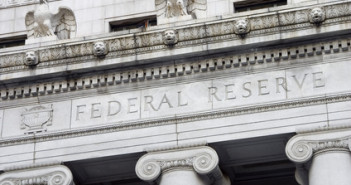The Federal Reserve in New York released a statement about a “small scaleâ€Â exercise that represents no change in monetary policy according to the Fed. This exercise tests draining money out of the markets – the exact opposite of QE.Â
This sign provides more evidence that QE3 is unlikely to be announced in Jackson Hole. Will the dollar enjoy this?
We already saw that three members of the FOMC dissented from the decision to pledge low rates until mid-2013. And now, it seems that the Fed is worried about too much liquidity that isn’t doing its job. In the statement released, the NY Fed stresses that this is a limited operation, and slips in a note about the “level of excess reservesâ€:
Specifically, the aggregate amount of outstanding reverse repo transactions will be very small relative to the level of excess reserves, and the transactions will be conducted at current market rates. These operations do not represent a change in the stance of monetary policy, and no inference should be drawn about the timing of any change in the stance of monetary policy in the future.
 After two massive quantitative easing programs, the Fed probably acknowledges that this tool is obsolete, and is preparing an exit strategy.
After two massive quantitative easing programs, the Fed probably acknowledges that this tool is obsolete, and is preparing an exit strategy.
The big exit is still far: Bernanke specifically stated that squeezing the balance sheet of the Fed is a tightening measure that has to be separately agreed upon.
But this statement, is a sign that the QE3 remains off the Agenda, at least not in the Jackson Hole Symposium on August 26th. Bernanke hinted about QE2 this time one year ago, and the chances of a similar announcement of QE3 now seems unlikely.
Izabella Kaminska explains why more quantitative easing could do more harm than damage:
That the system is so broken, it doesn’t matter how much liquidity the Fed creates because it won’t be able to get any further than the immediate banking community. And that’s because banks still can’t find enough credit worthy people to lend to. That the majority of loans still have a greater default risk than the banks are prepared to weather. That loans equal capital deterioration. And only loans to the most credit worthy people (of which there are not enough) are worthwhile.
With no new money printing from the Federal Reserve, the dollar has room for rises, and commodity prices have room to rise.
What do you think?
Further reading: QE Landing in Europe – Is the Euro Headed South?



